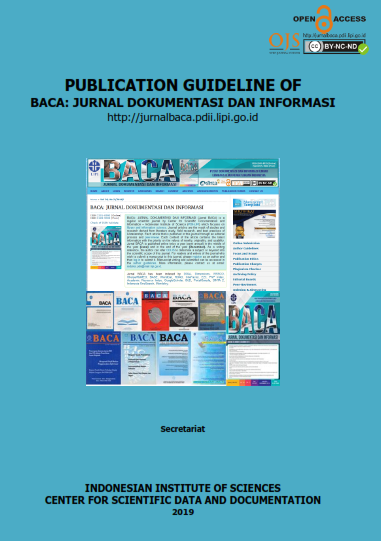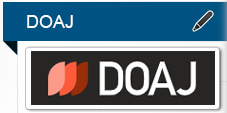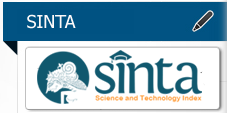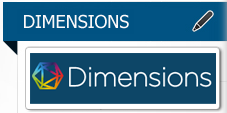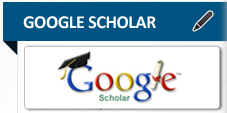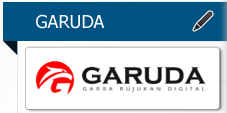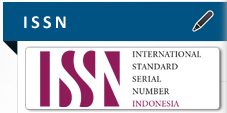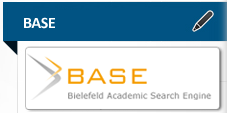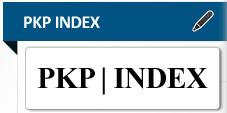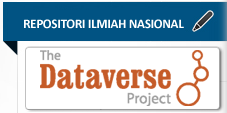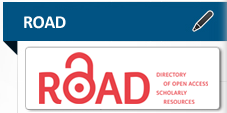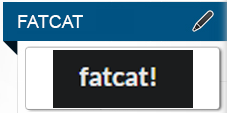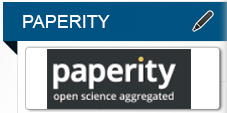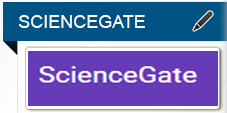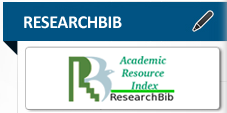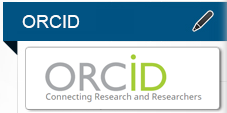TINJAUAN PUSTAKA SISTEMATIS PADA BASIS DATA PUSTAKA DIGITAL: TREN RISET, METODOLOGI, DAN COVERAGE FIELDS
Abstract
The characterization of digital databases is needed to make it easier for academics to identify scientific literature properly and efficiently. This literature review intends to provide characterizations and descriptions related to research trends, methods and coverage fields studied in research related to the scientific database of scientific literature from around 2007 to the present (January 2019). By applying the specified inclusion and exclusion criteria, 54 relevant studies were chosen to be studied further. The systematic literature review method was applied in this study to analyze and identify previous studies related to this topic. Based on the selected primary literature there is an increasing trend of studies related to the scientific database of scientific literature. In addition, we can see that there are four of the most influential and influential publication journals related to this topic, namely the Journal of Informetrics, Journal of Cleaner Production, Asian Social Science and Journal of Academic Librarianship which are characterized by high levels of productivity issues related to the topics studied and SJR values rank is in the range Q1. Most of the studies were conducted on Scopus digital database (41%), Web of Sciences (WoS) 38% and Google Scholar (GS) 13% and the rest spread in other publication journals. The results of this study also identified that Scopus is a scientific database which has the most varied coverage fields compared to other digital database scientific literature. WoS is a digital database of scientific literature that has proven to have a paper with a higher impact factor than others. GS has the predicate digital database with the largest collection level.
Keywords
Full Text:
PDFReferences
Abramo, Giovanni, Tindaro Cicero, & Ciriaco Andrea D’Angelo. 2012. A Sensitivity Analysis of Researchers’ Productivity Rankings to the Time of Citation Observation. Journal of Informetrics 6 (2): 192–201. https://doi.org/10.1016/j.joi.2011.12.003.
Adriaanse, Leslie S., & Chris Rensleigh. 2013. Web of Science, Scopus and Google Scholar a Content Comprehensiveness Comparison. Electronic Library, 31 (6): 727–44. https://doi.org/10.1108/EL-12-2011-0174.
Aldieri, Luigi, Maxim Kotsemir, & Concetto Paolo Vinci. 2018. The Impact of Research Collaboration on Academic Performance: An Empirical Analysis for Some European Countries. Socio-Economic Planning Sciences 62: 13–30. https://doi.org/10.1016/j.seps.2017.05.003.
Aleixandre-Benavent, R., J. L. Aleixandre-Tudó, L. Castelló-Cogollos, & J. L. Aleixandre. 2017. “Trends in Scientific Research on Climate Change in Agriculture and Forestry Subject Areas (2005–2014). Journal of Cleaner Production 147: 406–18. https://doi.org/10.1016/j.jclepro.2017.01.112.
Álvarez-García, José, Amador Durán-Sánchez, & María de la Cruz del Río-Rama. 2018. Scientific Coverage in Community-Based Tourism: Sustainable Tourism and Strategy for Social Development. Sustainability 10 (4). https://doi.org/10.3390/su10041158.
Bornmann, Lutz, Werner Marx, Hermann Schier, Erhard Rahm, Andreas Thor, & Hans Dieter Daniel. 2009. Convergent Validity of Bibliometric Google Scholar Data in the Field of Chemistry-Citation Counts for Papers That Were Accepted by Angewandte Chemie International Edition or Rejected but Published Elsewhere, Using Google Scholar, Science Citation Index, S. Journal of Informetrics 3 (1): 27–35. https://doi.org/10.1016/j.joi.2008.11.001.
Borrett, Stuart R., Laura Sheble, James Moody, & Evan C. Anway. 2018. Bibliometric Review of Ecological Network Analysis: 2010–2016. Ecological Modelling 382 (March): 63–82. https://doi.org/10.1016/j.ecolmodel.2018.04.020.
Boyle, France, & Damien Sherman. 2006. The Product and Its Development. The Serials Librarian 1095 (May 2014): 37–41. https://doi.org/10.1300/J123v49n03.
Calver, Michael C., Barry Goldman, Patricia A. Hutchings, & Richard T. Kingsford. 2017. Why Discrepancies in Searching the Conservation Biology Literature Matter. Biological Conservation, 213 (April): 19–26. https://doi.org/10.1016/j.biocon.2017.06.028.
Cardoso, Gustavo. 2018. The Impact Factor as a Legitimator of the Scientific Knowledge Produced: A Review of the Literature. International Relations 9 (2): 32–44. https://doi.org/10.26619/1647-7251.9.2.3.
Casagrandi, R., & G. Guariso. 2009. Impact of ICT in Environmental Sciences: A Citation Analysis 1990-2007. Environmental Modelling and Software 24 (7): 865–71. https://doi.org/10.1016/j.envsoft.2008.11.013.
Caya, Rosalia, & João José Neto. 2018. A Bibliometric Review about Adaptivity. Procedia Computer Science 130: 1114–19. https://doi.org/10.1016/j.procs.2018.04.163.
Cerovšek, Tomo, & Matjaž Mikoš. 2014. A Comparative Study of Cross-Domain Research Output and Citations: Research Impact Cubes and Binary Citation Frequencies. Journal of Informetrics 8 (1): 147–61. https://doi.org/10.1016/j.joi.2013.11.004.
Chadegani, Arezoo Aghaei, Hadi Salehi, Melor Yunus, Hadi Farhadi, Masood Fooladi, & Maryam Farhadi. 2017. A Comparison between Two Main Academic Literature Collections: Web of Science and Scopus Databases. Asian Social Science 9 (5): 18–26. https://doi.org/10.5539/ass.v9n5p18.
Chadegani, Arezoo Aghaei, Hadi Salehi, Melor Md Yunus, Hadi Farhadi, Masood Fooladi, Maryam Farhadi, & Nader Ale Ebrahim. 2013. A Comparison between Two Main Academic Literature Collections : Web of Science and Scopus Databases. Asian Social Science 9 (5). https://doi.org/10.5539/ass.v9n5p18.
Chou, Pn. 2012. A Comparison Study of Impact Factor in Web of Science and Scopus Databases for Engineering Education and Educational Technology Journals. Informing Science and Information Technology 9. https://doi.org/10.7763/IJIET.2012.V2.209.
Durán-Sánchez, Amador, José Álvarez-García, and María de la Cruz del Río-Rama. 2018. Sustainable Water Resources Management: A Bibliometric Overview. Water (Switzerland) 10 (9): 1–19. https://doi.org/10.3390/w10091191.
Ebrahim, Nader Ale, N Ale Ebrahim, Hadi Salehi, Arezoo Aghaei, & Hadi Farhadi. 2015. A Comparison between Web of Science and Scopus Databases. Asian Social Science, no. May. https://doi.org/10.5539/ass.v9n5p18.
Ellegaard, Ole, & Johan A. Wallin. 2013. Identification of Environmentally Relevant Chemicals in Bibliographic Databases: A Comparative Analysis. SpringerPlus 2 (1): 1–14. https://doi.org/10.1186/2193-1801-2-255.
Fellnhofer, Katharina. 2019. Toward a Taxonomy of Entrepreneurship Education Research Literature: A Bibliometric Mapping and Visualization. Educational Research Review. https://doi.org/10.1016/j.edurev.2018.10.002.
Fernández-Guerrero, María José, & Beatriz Palacios-Vicario. 2017. El Trastorno Límite de Personalidad En La Producción Científica Publicada En Revistas Editadas En España. Clinica y Salud 28 (3): 147–53. https://doi.org/10.1016/j.clysa.2017.05.002.
Franceschini, Fiorenzo, Domenico Maisano, & Luca Mastrogiacomo. 2014. Scientific Journal Publishers and Omitted Citations in Bibliometric Databases: Any Relationship?. Journal of Informetrics 8 (3): 751–65. https://doi.org/10.1016/j.joi.2014.07.003.
Franceschini, Fiorenzo, Domenico Maisano, & Luca Mastrogiacomo. 2016. Empirical Analysis and Classification of Database Errors in Scopus and Web of Science. Journal of Informetrics 10 (4): 933–53. https://doi.org/10.1016/j.joi.2016.07.003.
Gavel, Ylva, & Lars Iselid. 2008. Web of Science and Scopus: A Journal Title Overlap Study. Online Information Review 32 (1): 8–21. https://doi.org/10.1108/14684520810865958.
Guz, AN, & J. J.Rushchitsky. 2009. Scopus: A System for The Evaluation of Scientific Journals. International Applied Mechanics, 45 (4): 351–62.
Ha, Ilkyu, Hohwan Park, & Chonggun Kim. 2014. Analysis of Twitter Research Trends Based on SLR. International Conference on Advanced Communication Technology, ICACT, 774–78. https://doi.org/10.1109/ICACT.2014.6779067.
Halevi, Gali, Henk Moed, & Judit Bar-Ilan. 2017. Suitability of Google Scholar as a Source of Scientific Information and as a Source of Data for Scientific Evaluation—Review of the Literature. Journal of Informetrics 11 (3): 823–34. https://doi.org/10.1016/j.joi.2017.06.005.
Hwang, San-yih, Chih-ping Wei, & Yi-fan Liao. 2010. Coauthorship Networks and Academic Literature Recommendation. IEE Conference Publication 9 (2004–10711): 323–34. https://doi.org/10.1016/j.elerap.2010.01.001.
Joshi, Aditi, Gurukul Mahila, Mahavidhyalaya Kalibadi, & Road Raipur. 2017. Comparison Between Scopus & ISI Web of Science. Journal Global Value, July.
Kakamad, Fahmi H, Q S Rawezh, H M Shvan, A H Dahat, A H Hunar, & Snur Othman. 2018. Paper Ranking ; A Strategy to Embed Research Culture in Developing Countries International Journal of Surgery Open Paper Ranking , a Strategy to Embed Research Culture in Developing Countries. International Journal of Surgery Open 15 (November), 56–59. https://doi.org/10.1016/j.ijso.2018.11.004.
Karyatin, Arianiansyah. 2013. Analisis Perbandingan Database Jurnal Elektronik Emerald, Proquest Abi/Inform dan Springerlink Bidang Manajemen dan Ekonomi. Medan: Univeristas Sumatera Utara.
Keenan, Peter Bernard, & Piotr Jankowski. 2019. Spatial Decision Support Systems: Three Decades On. Decision Support Systems, 116 (October 2018), 64–76. https://doi.org/10.1016/j.dss.2018.10.010.
Kitchenham, B., & S. Charters. 2007. Issue: EBSE 2007-001. Technical Report, Vol.2.
Levine-Clark, Michael, & Esther L. Gil. 2009. A Comparative Citation Analysis of Web of Science, Scopus, and Google Scholar. Journal of Business and Finance Librarianship, 14 (1), 32–46. https://doi.org/10.1080/08963560802176348.
Li, Jiang, Lili Qiao, Wenyuze Li, & Yidan Jin. 2014. Chinese-Language Articles Are Not Biased in Citations: Evidences from Chinese-English Bilingual Journals in Scopus and Web of Science. Journal of Informetrics 8 (4): 912–16. https://doi.org/10.1016/j.joi.2014.09.003.
López-Illescas, Carmen, Félix de Moya-Anegón, & Henk F. Moed. 2008. Coverage and Citation Impact of Oncological Journals in the Web of Science and Scopus. Journal of Informetrics 2 (4), 304–16. https://doi.org/10.1016/j.joi.2008.08.001.
Martin-Martin, Alberto, Enrique Orduna-Malea, Anne Wil Harzing, & Emilio Delgado López-Cózar. 2017. Can We Use Google Scholar to Identify Highly-Cited Documents?. Journal of Informetrics 11 (1), 152–63. https://doi.org/10.1016/j.joi.2016.11.008.
Maryatun. 2016. Pemanfaatan Database EBSCO dan ProQuest Sebagai Rujukan Penyusunan Tesis dan Disertasi Bagi Mahasiswa Program Magister Sains dan Doktor Fakultas Ekonomika dan Bisnis UGM : Analisis Sitiran Jurnal Ilmiah. Ilmu Perpustkaan dan Informasi XII: 123–35.
Meho, Lokman I, & Kiduk Yang. 2007. Impact of Data Sources on Citation Counts and Rangkings of LIS Faculty: Web of Science Versus Scopus and Google Scholar. Journal of The American Society for Information Science and Technology 58 (13), 2105–25. https://doi.org/10.1002/asi.
Merli, Roberto, Michele Preziosi, & Alessia Acampora. 2018. How Do Scholars Approach the Circular Economy? A Systematic Literature Review. Journal of Cleaner Production 178, 703–22. https://doi.org/10.1016/j.jclepro.2017.12.112.
Mingers, John, & Loet Leydesdorff. 2015. A Review of Theory and Practice in Scientometrics. European Journal of Operational Research 246 (1), 1–19. https://doi.org/10.1016/j.ejor.2015.04.002.
Moed, Henk F., Judit Bar-Ilan, & Gali Halevi. 2016. A New Methodology for Comparing Google Scholar and Scopus. Journal of Informetrics 10 (2), 533–51. https://doi.org/10.1016/j.joi.2016.04.017.
Mongeon, Philippe, & Adèle Paul-Hus. 2016. The Journal Coverage of Web of Science and Scopus: A Comparative Analysis. Scientometrics, 106 (1): 213–28. https://doi.org/10.1007/s11192-015-1765-5.
Moussa, Salim & Mourad Touzani. 2010. Ranking Marketing Journals Using the Google Scholar-Based Hg-Index. Journal of Informetrics 4 (1), 107–17. https://doi.org/10.1016/j.joi.2009.10.001.
Muhuri, Pranab K, Amit K Shukla, & Ajith Abraham. 2019. Industry 4.0: A Bibliometric Analysis and Detailed Overview. Engineering Applications of Artificial Intelligence, 78 (December 2018), 218–35. https://doi.org/10.1016/j.engappai.2018.11.007.
Nanang, Oleh. 2015. Rangking Publikasi Ilmiah Internasional Indonesia Bagus Subekti. SINDO, 2015.
Olawumi, Timothy O., & Daniel W.M. Chan. 2018. A Scientometric Review of Global Research on Sustainability and Sustainable Development. Journal of Cleaner Production, 183: 231–50. https://doi.org/10.1016/j.jclepro.2018.02.162.
Olmeda-Gómez, Carlos, & Félix de Moya-Anegón. 2016. Publishing Trends in Library and Information Sciences Across European Countries and Institutions. Journal of Academic Librarianship 42 (1): 27–37. https://doi.org/10.1016/j.acalib.2015.10.005.
Perianes-Rodriguez, Antonio, & Javier Ruiz-Castillo. 2017. A Comparison of the Web of Science and Publication-Level Classification Systems of Science. Journal of Informetrics 11 (1): 32–45. https://doi.org/10.1016/j.joi.2016.10.007.
Sánchez, Amador Durán, María de la Cruz Del Río Rama, & José Álvarez García. 2017. Bibliometric Analysis of Publications on Wine Tourism in the Databases Scopus and WoS. European Research on Management and Business Economics 23 (1), 8–15. https://doi.org/10.1016/j.iedeen.2016.02.001.
Scimago Lab. 2019. Scimago Journal & Country Rank. 2019. https://www.scimagojr.com/countryrank.php.
Ştirbu, Simona, Paul Thirion, Serge Schmitz, Gentiane Haesbroeck, & Ninfa Greco. 2015. The Utility of Google Scholar When Searching Geographical Literature: Comparison With Three Commercial Bibliographic Databases. Journal of Academic Librarianship 41 (3), 322–29. https://doi.org/10.1016/j.acalib.2015.02.013.
Subochev, Andrey, Fuad Aleskerov, Vladimir Pislyakov. 2018. Ranking Journals Using Social Choice Theory Methods: A Novel Approach in Bibliometrics. Journal of Informetrics 12: 416–29. https://doi.org/10.1016/j.joi.2018.03.001.
Vakkari, Pertti. 2008. Perceived Influence of the Use of Electronic Information Resources on Scholarly Work and Publication Productivity Pertti. Journal of the American Society for Information Science 59 (4): 602–12. https://doi.org/10.1002/asi.
Wahono, Romi Satria. 2015. A Systematic Literature Review of Software Defect Prediction : Research Trends, Datasets, Methods and Frameworks. Journal of Software Engineering 1 (1): 1–16. https://doi.org/2356-3974.
Wang, Qi, & Ludo Waltman. 2016. Large-Scale Analysis of the Accuracy of the Journal Classification Systems of Web of Science and Scopus. Journal of Informetrics 10 (2): 347–64. https://doi.org/10.1016/j.joi.2016.02.003.
Yeung, Andy Wai Kan, Andrei Mocan, and Atanas G. Atanasov. 2018. Let Food Be Thy Medicine and Medicine Be Thy Food: A Bibliometric Analysis of the Most Cited Papers Focusing on Nutraceuticals and Functional Foods. Food Chemistry 269 (June): 455–65. https://doi.org/10.1016/j.foodchem.2018.06.139.
Zheng, Xian, Yun Le, Albert P C Chan, Yi Hu, & Yongkui Li. 2016. Review of the Application of Social Network Analysis (SNA) in Construction Project Management Research. International Journal of Project Management, 34, 1214–25. https://doi.org/10.1016/j.ijproman.2016.06.005.
DOI: https://doi.org/10.14203/j.baca.v40i1.481
Copyright (c) 2019 BACA: JURNAL DOKUMENTASI DAN INFORMASI

This work is licensed under a Creative Commons Attribution-NonCommercial-NoDerivatives 4.0 International License.












